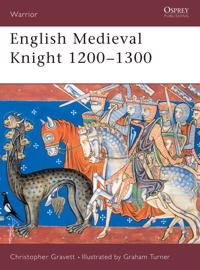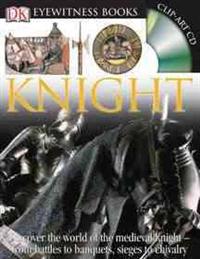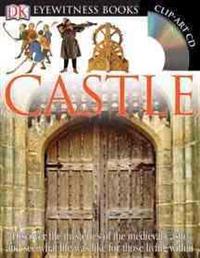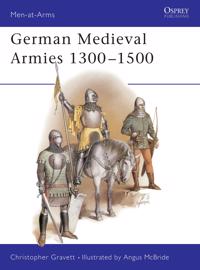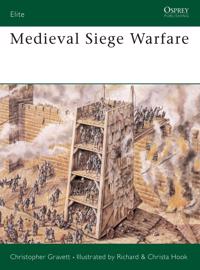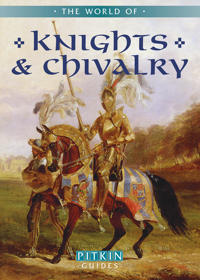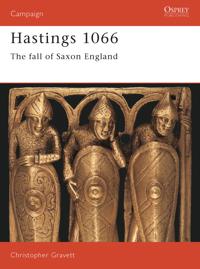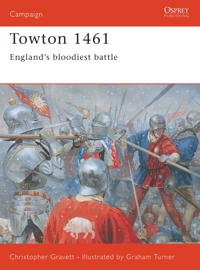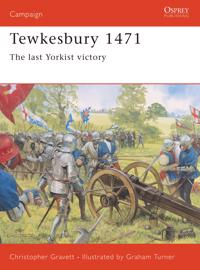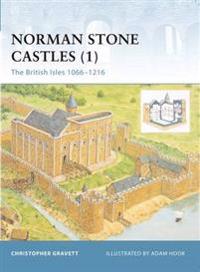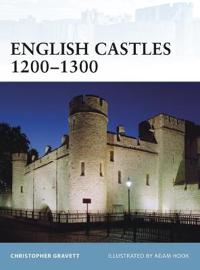English Medieval Knight 1200-1300 (Pocket)
avChristopher Gravett, Graham (ILT) Turner, Christopher Gravett
ISBN: 9781841761442 - UTGIVEN: 2002-04This volume details the life of the English knight during the 13th century, a period in which knighthood became so expensive that many eligible men had to be forced into it by royal command. How the tournament, a highly dangerous but lucrative way of accumulating wealth and status, evolved through t[...]
The Archaeology of Identities (Storpocket)
avChristopher Gravett
ISBN: 9780415415026 - UTGIVEN: 2006-12The Archaeology of Identities brings together seventeen seminal articles from this exciting new discipline in one indispensable volume for the first time. Editor Timothy Insoll expertly selects a cross-section of contributions by leading authorities to form a comprehensive and balanced representatio[...]
Knight [With Clip Art CDWith Wallchart] (Inbunden)
avChristopher Gravett
ISBN: 9780756630034 - UTGIVEN: 200706Castle [With Clip-Art CD and Poster] (Inbunden)
avChristopher Gravett
ISBN: 9780756637699 - UTGIVEN: 200806German Medieval Armies, 1300-1500 (Häftad)
avChristopher Gravett
ISBN: 9780850456141 - UTGIVEN: 1985-11The German rulers were forceful and powerful men, and, surrounded by potential enemies, circumstances dictated the necessity of rule by strength based on military capacity. In the later 15th Century, three houses rose above the others; the families of Wittelsbach, Luxemburg and the powerful Austrian[...]
Medieval Siege Warfare (Pocket)
avChristopher Gravett
ISBN: 9780850459470 - UTGIVEN: 1990-06During the Middle Ages siege warfare played a vital role in military strategy. Sieges were far more numerous than pitched battles, ranging from small-scale affairs against palisaded earthworks to full-scale assaults on vast strongholds. Needless to say, the art of siege warfare assumed a unique impo[...]
World of Knights and Chivalry (Häftad)
avChristopher Gravett
ISBN: 9781841653822 - UTGIVEN: 2012-04World of Knights and Chivalry
Hastings 1066 (Pocket)
avChristopher Gravett
ISBN: 9781841761336 - UTGIVEN: 2000-09The Battle of Hastings changed the course of English history. Featuring a visitor's guide to the battlefield today, this edition contains new views of the battlefield and gives information on the best-known figures of British heritage.[...]
Towton 1461 (Häftad)
avChristopher Gravett
ISBN: 9781841765136 - UTGIVEN: 200304The Lancastrian army was conducting a triumphant march on the capital, having defeated Warwick at the Second Battle of St. Albans, when on 4 March, Edward of York was proclaimed king in London. The Lancastrians withdrew northwards and Edward followed in pursuit. The two armies met at the village of [...]
Tewkesbury 1471 (Häftad)
avChristopher Gravett
ISBN: 9781841765143 - UTGIVEN: 200310Following their victory at Towton in 1461, The House of York continued to triumph. By 1470, however, relations between Edward and his lieutenant, Eari of Warwick, had broken down and Warwick had joined the Lancastrian cause. On 14 April 1471 at Barnet, Edward defeated and killed Warwick. On the same[...]
Norman Stone Castles (Häftad)
avChristopher Gravett
ISBN: 9781841766027 - UTGIVEN: 2003-10The Normans were some of the most feared warriors of the High Medieval period, descended from the Vikings who had settled in Northern France under their leader Rollo in or around 911: throughout the following centuries they built on their warlike reputation. This culminated in their conquest of Engl[...]
Tudor Knight (Häftad)
avChristopher Gravett
ISBN: 9781841769707 - UTGIVEN: 2006-05The Tudor Knight was the first line of defence employed by monarchs from Henry VIII to Elizabeth I, the last of a long tradition of knighthood dating back to the 11th century. He was well trained in the arts of war and chivalry from a young age, and he was skilled in the arts and languages, for the [...]
English Castles 1200-1300 (Häftad)
avChristopher Gravett
ISBN: 9781846033742 - UTGIVEN: 200907The simple castles raised after the Norman conquest had been developed throughout 11th and 12th centuries, whilst the introduction of Islamic and Byzantine fortification techniques from the late 12th century led to further developments in castle architecture. These fortifications were to be well tes[...]

